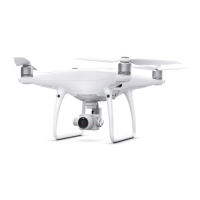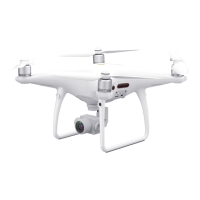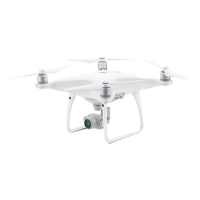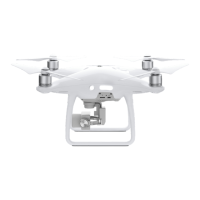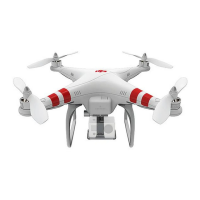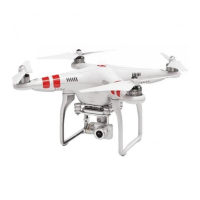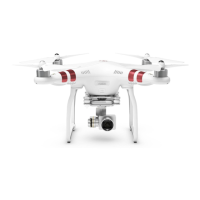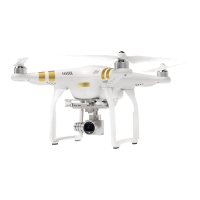©
2018 DJI All Rights Reserved.
55
Flight
Once the pre-ight preparation is complete, it is recommended to hone your ight skills through training and
practice ying safely. The altitude limit is 1, 640 feet (500 meters). Avoid ying at any altitudes higher. It is
important to understand basic ight guidelines for the safety of both you and those around you. Refer to the
Disclaimer and Safety Guidelines for more information.
Flight Environment Requirements
1. Do not use the aircraft in severe weather conditions. These include wind speeds exceeding 10 m/s,
snow, rain and fog.
2. Only y in open areas. Tall structures and large metal structures may aect the accuracy of the on-board
compass and GNSS system.
3. Avoid obstacles, crowds, high voltage power lines, trees, and bodies of water.
4. Minimize interference by avoiding areas with high levels of electromagnetism, including base stations and
radio transmission towers.
5. Aircraft and battery performance is subject to environmental factors such as air density and temperature.
Be very careful when ying at altitudes greater than 19, 685 feet (6000 meters) above sea level, as the
performance of the battery and aircraft may be aected.
6. In the Earth’s polar regions the aircraft can only operate in Attitude mode or using vision positioning.
GEO (Geospatial Environment Online) System
Introduction
DJI’s Geospatial Environment Online (GEO) System is a global information system committed to
providing real-time airspace information within the scope of international laws and regulations.
GEO provides flight information, flight times and location information to assist Unmanned Aerial
Vehicle (UAV) users in making the best decisions related to their personal UAV use. It also includes
a unique Regional Flight Restrictions feature which provides real-time ight safety and restriction
updates and blocks UAVs from ying in restricted airspace. While safety and obeying air trafc
control laws is a paramount concern, DJI recognizes the need for exceptions to be made under
special circumstances. To meet this need, GEO also includes an Unlocking feature that enables
users to unlock flights within restricted areas. Prior to making their flight, users must submit an
unlock request based on the current level of restrictions in their area.
GEO Zones
DJI’s GEO System designates safe flight locations, provides risk levels and safety concerns for
individual ights, and offers restricted airspace information, which can be viewed by users in real
time on the DJI GS RTK app. The locations designated by GEO are called GEO Zones. GEO Zones
are specic ight areas that are categorized by ight regulations and restrictions. GEO Zones that
prohibit ight are implemented around locations such as airports, power plants, and prisons. They
can also be temporarily implemented around major stadium events, forest res, or other emergency
situations. Certain GEO Zones do not prohibit flight but do trigger warnings informing users of
potential risks. All restricted ight areas are referred to as GEO Zones, and are further divided into
Warning Zones, Enhanced Warning Zones, Authorization Zones, Altitude Zones, and Restricted
Zones. By default, GEO limits flights into or taking off within zones that may result in safety or
security concerns. There is a GEO Zone Map, which contains comprehensive global GEO Zone
information on the ofcial DJI website: https://www.dji.com/ysafe.

